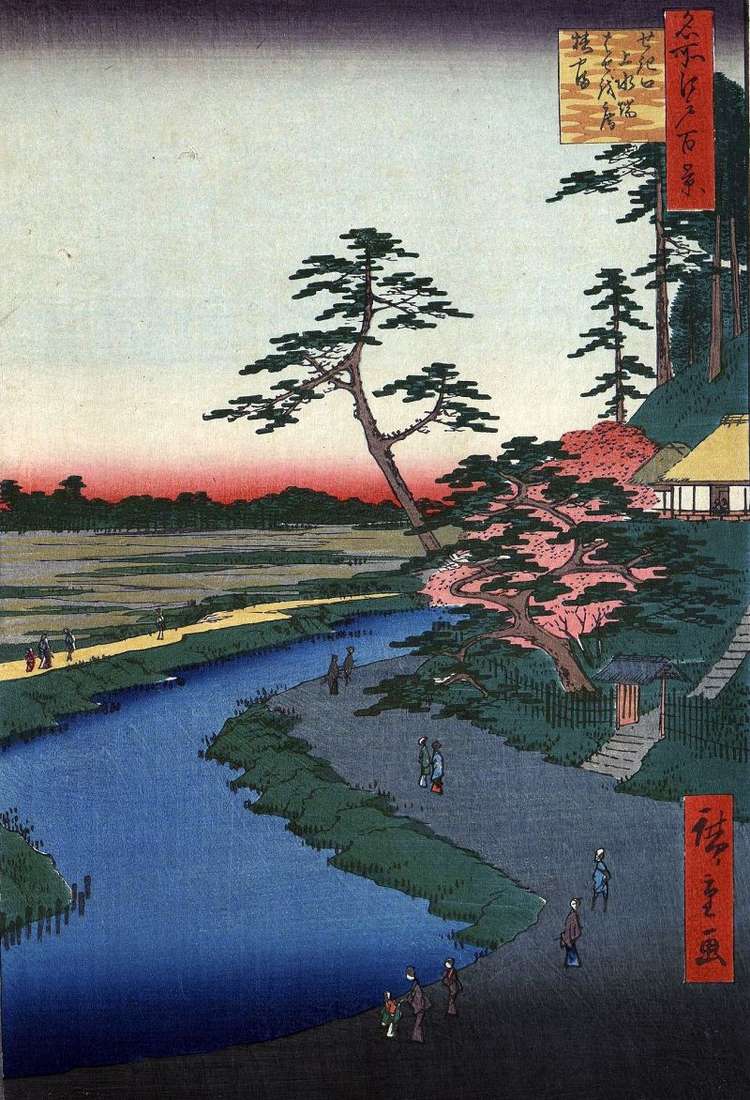
In the center of the engraving is the largest canal of Kanda-Dziuyu, which was built by order of Bakufu to provide the capital with drinking water. It originated in the pond of Inokasira no Ike, then along the Kandagawa riverbed reached the Sekiguchi dam. Also called the Sekiguchi-daimati district. From 1677 to 1680, the family of Daimyo Todo from Igakozuke was engaged in the repair of a dam and a dam. Bass, who served at the daimyo in this prefecture, took part in the repair. Here he folded a haiku dedicated to this place.
Fifty years after the death of Basse, the Ryugean hut was built on this site, it is depicted on the right on a hill near the canal. Behind it, the name Bassean – the hut of Basse, the famous poet of the 17th century – was fixed. From ancient times on the mountain grew a lot of camellias, so it was called Tsubakiyama. But in the engraving of Hiroshige there are only cherry trees in bloom. At the top of Tsubakia-ma was the sanctuary of Sujinsya, dedicated to the Shinto water deity, Mizuka no me, which guarded the waters of the Kanda-dziuy channel. The color of the road along the canal in the later version of the engraving significantly changed. He became light brown, like a trail on the far shore. The soil of the fields in the background has acquired gray shades. The color of the strip of the bokasi has changed from above, instead of red it is blue.
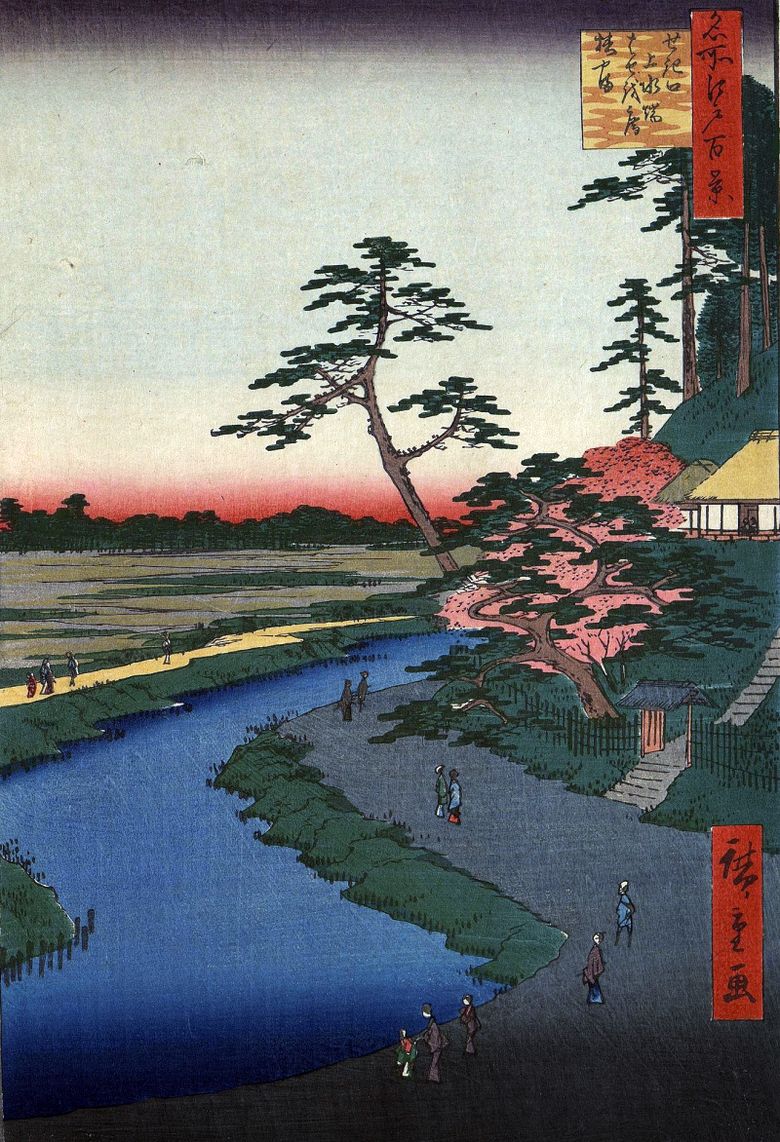 Basean Hut sur la montagne Tsubakiyama par l’aqueduc dans le quartier de Sekiguchi – Utagawa Hiroshige
Basean Hut sur la montagne Tsubakiyama par l’aqueduc dans le quartier de Sekiguchi – Utagawa Hiroshige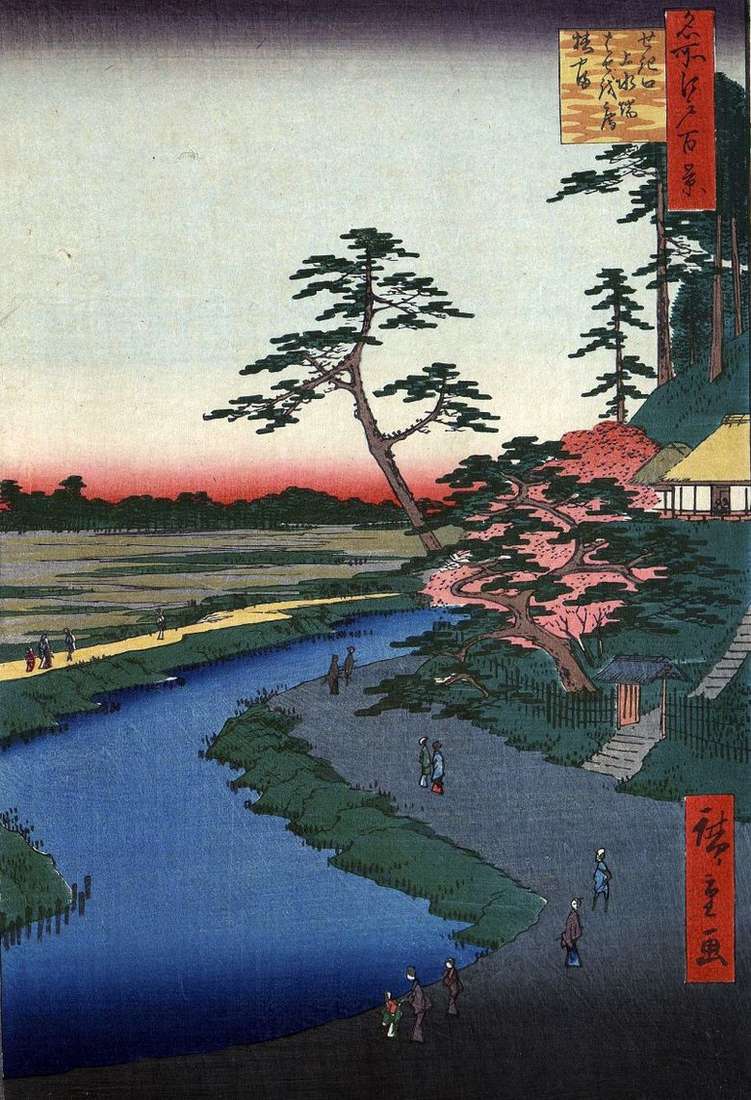 Choza “Basean” en el Monte Tsubakiyama cerca del acueducto en el barrio Sekiguti – Utagawa Hiroshige
Choza “Basean” en el Monte Tsubakiyama cerca del acueducto en el barrio Sekiguti – Utagawa Hiroshige Suidobashi Bridge in Surugaday by Utagawa Hiroshige
Suidobashi Bridge in Surugaday by Utagawa Hiroshige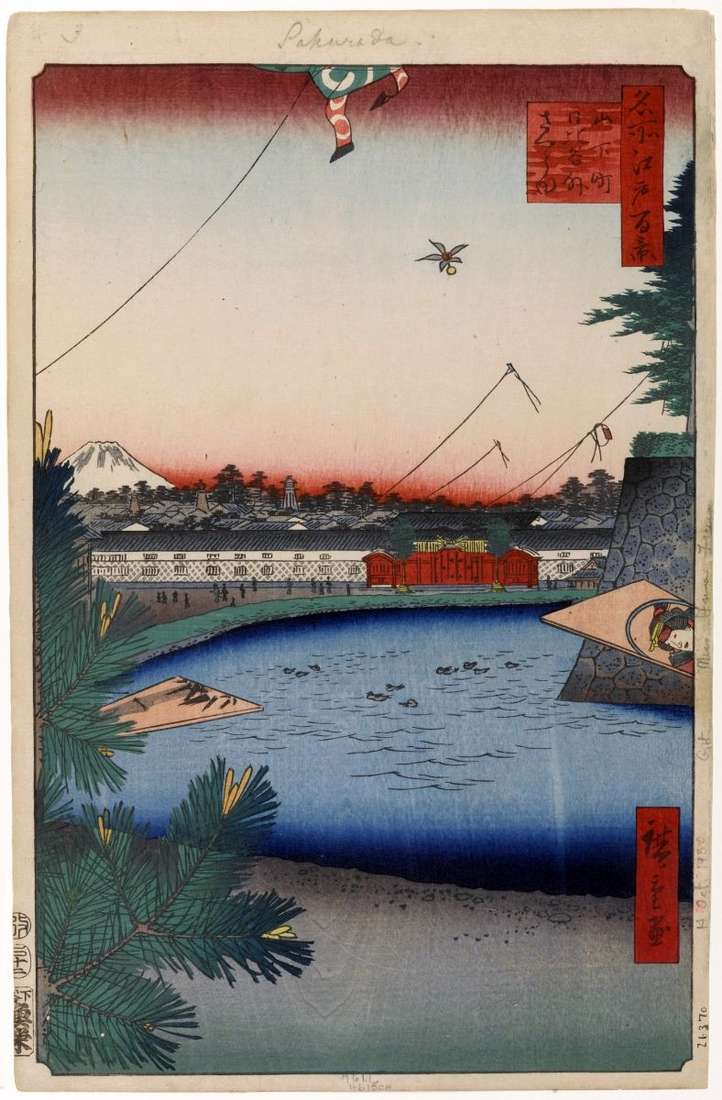 The area of Hibiya in the Soto-Sakurada area from the Yamashita-te by Utagawa Hiroshige district
The area of Hibiya in the Soto-Sakurada area from the Yamashita-te by Utagawa Hiroshige district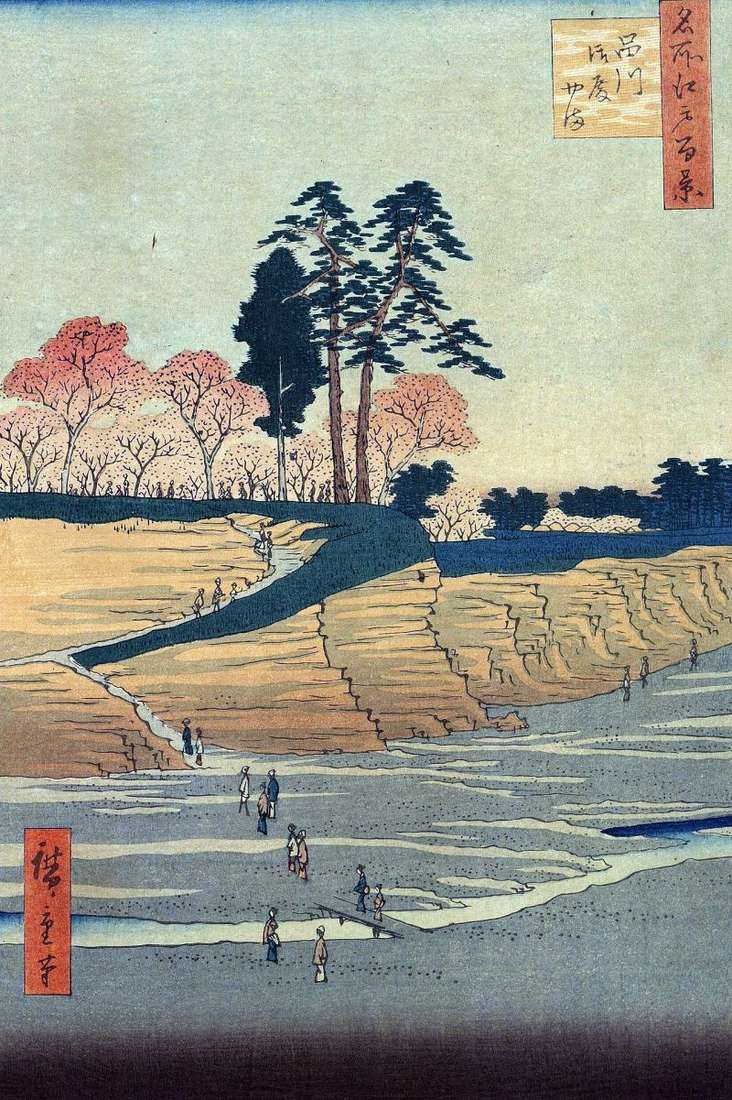 Shinagawa, Mount Gotenyama by Utagawa Hiroshige
Shinagawa, Mount Gotenyama by Utagawa Hiroshige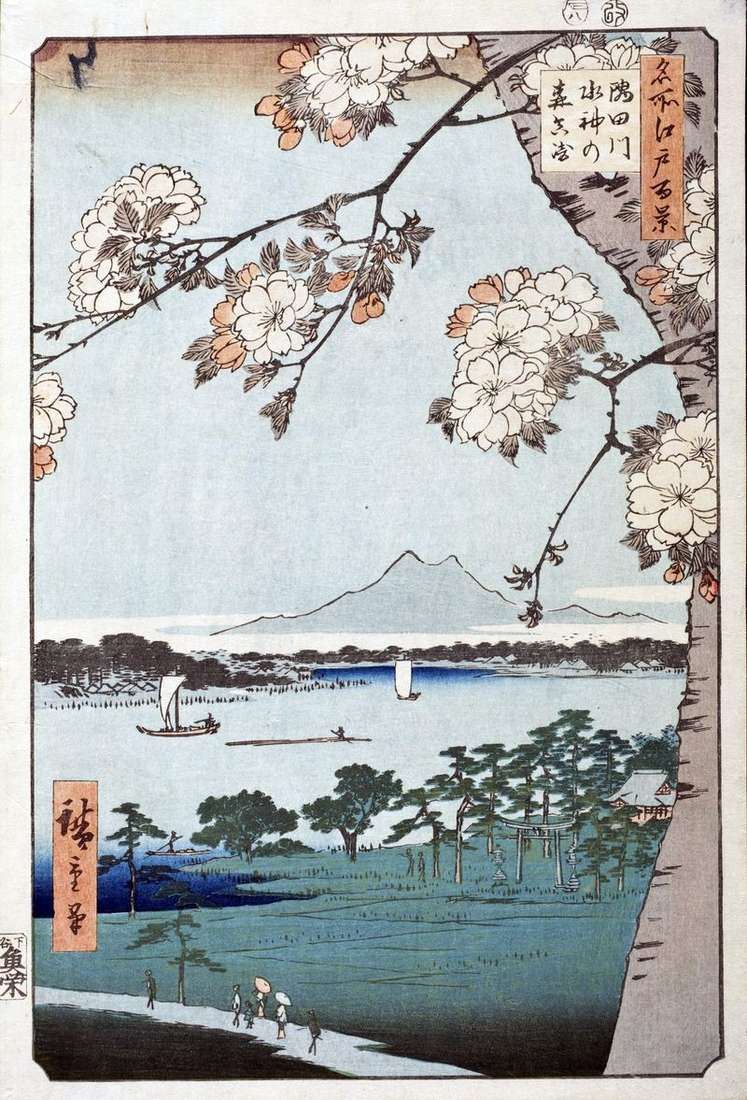 Sanctuary of Suidzin-no Mori and the locality of Massaki near the Sumidagawa River by Utagawa Hiroshige
Sanctuary of Suidzin-no Mori and the locality of Massaki near the Sumidagawa River by Utagawa Hiroshige View of the First street in the Nihonbashi district by Utagawa Hiroshige
View of the First street in the Nihonbashi district by Utagawa Hiroshige Rainfall over the bridge of Ohashi, Atake by Utagawa Hiroshige
Rainfall over the bridge of Ohashi, Atake by Utagawa Hiroshige